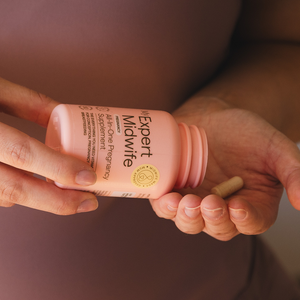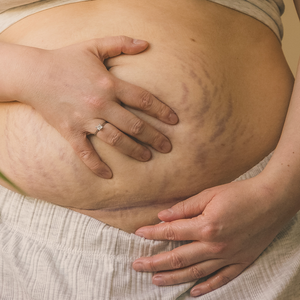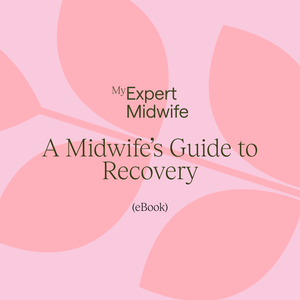While most women and people will give birth to their baby or babies without complications, sometimes the unexpected does happen. Being prepared for the possibility of your partner needing to have an unplanned caesarean section or a forceps or ventouse birth can mean that you are much more able to support her, and yourself, if labour starts to head in a different direction to your plan.
What are forceps and ventouse?
Forceps look rather like large salad spoons, but without the middle part - so the salad would just fall through! They are placed around the sides of your baby’s head and are used by doctors to help your baby to be born by being gently pulled as your partner pushes, or by helping your baby’s head to turn if they’re not in a good position for birth.
A ventouse uses a suction cup which attaches to the top of your baby’s head and allows the doctor to gently pull on your baby to help them to be born.
What is an emergency caesarean section?
Although it may sound scary, the term “emergency caesarean”, or c-section, doesn’t necessarily mean that there really is a life-or-death emergency! It is just a term that’s used when a c-section is done without previous planning during pregnancy, usually while a woman is already in labour. Although emergency c-sections can occasionally be an actual emergency, more often they happen because there are signs that problems may be starting and it is thought that a caesarean may be the best option.
Who decides what happens?
It is always your partner’s decision whether or not to have a c-section, a forceps or a ventouse delivery when one is offered, even if that’s not often explained or if she’s been told she “has to”. So your role here can be vital.
Do you both understand what is going on? Does your partner have any questions? She may find it hard to keep pressing for answers while she’s in labour if you’ve not yet been given an explanation that you both understand. You can be the one to ensure she gets the information she needs for her decision.
Here are some useful questions:
- What is happening?
- Why is it happening?
- Why is a caesarean/forceps/ventouse being recommended?
- What happens if you wait a while?
- What else could we do instead?
You can ask to speak to someone else for a second opinion, if you wish.
What happens next?
Your partner will be asked to sign a consent form, although this isn’t legally giving consent unless she properly understands it. So, if there is time (which there usually – although not always – is), she should be able to go through it when she can (between contractions) and ask questions.
Try to make sure your partner knows what is happening and, if things are being done to her without her consent, try to advocate for her. For instance, it is common for an episiotomy to be done when forceps are used. This is a cut made into her perineum. She has to give consent for this, and appropriate pain relief should be given, so it is ok to just ask the doctor to stop and wait for consent (if she wants to give it) before they go ahead and do it. This can be a really important part of helping her to stay in control of things. Feeling out of control is a common cause of birth trauma, so your advocacy can make a huge difference to her wellbeing post birth.
Occasionally, forceps (or, less commonly, ventouse) deliveries may be done in theatre. In the rare event that they are unsuccessful, the obstetric team may recommend moving on to a c-section.
How you may feel
Of course, when labour doesn’t go smoothly it can be an anxious time for everyone. It’s completely normal to be worried. Very often the midwives and staff will be able to reassure you. It’s ok to ask questions if you’re unsure what’s going on. If you feel panicky, try to remember to take long, deep breaths, with long exhalations, and then focus on whatever needs to be done next.
After birth
After a tricky birth, your partner holding her baby skin to skin can make a huge difference to her wellbeing. It can trigger hormones which relax her and your baby, as well as reducing the chance of heavy blood loss, as skin to skin helps her uterus to contract after birth. It can also mean that breastfeeding is more likely to get off to a good start, which can be very healing.
Sadly, sometimes either your partner or your baby needs additional care after the birth and they won’t be able to be together. It can be very hard to know whether to go with your baby or your wife/partner in this situation. There isn’t a right or wrong answer, but it’s maybe something to talk to her about in advance of labour.
Summary
Although most births don’t need intervention, quite a high number of labours will end up with a caesarean, forceps or ventouse birth. Being prepared for this can mean that it is less of a shock, and you feel better able to support yourself, your partner and, ultimately, your baby.


















